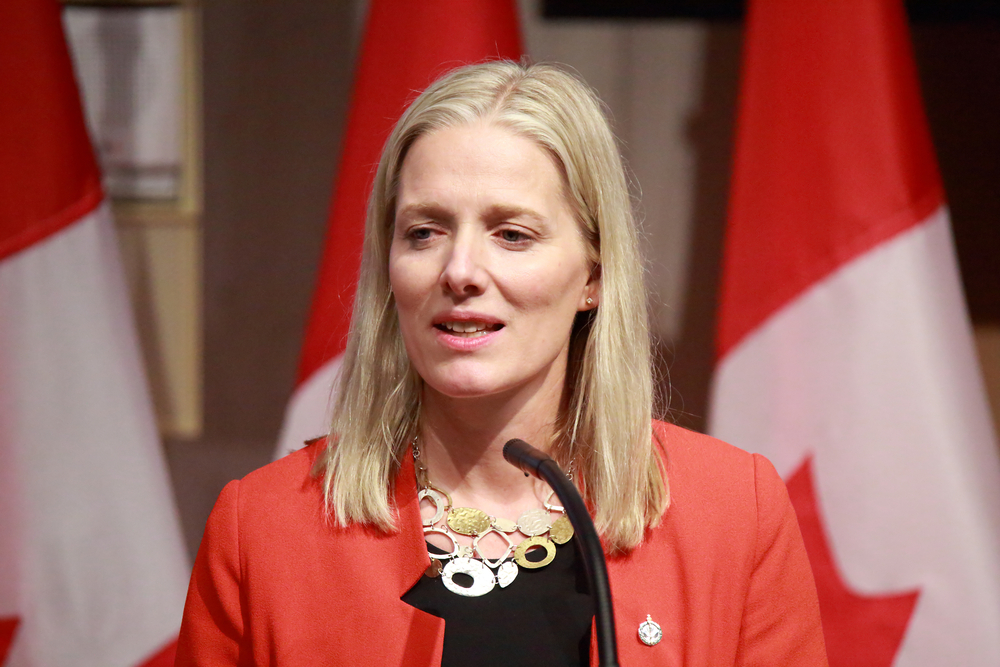Business and Economy
Small business to get help on energy efficiency upgrades from carbon tax money

Environment Minister Catherine McKenna is introducing the carbon price rebate program for small and medium-sized businesses today, nearly two months after the new carbon price began being applied in Ontario, Saskatchewan, Manitoba and New Brunswick. (Shutterstock Photo)
OTTAWA — Small businesses in the four provinces with a national carbon price will get $1.4 billion over the next four years to help them cut their carbon-tax bills by reducing their energy use.
Environment Minister Catherine McKenna is introducing the carbon price rebate program for small and medium-sized businesses today, nearly two months after the new carbon price began being applied in Ontario, Saskatchewan, Manitoba and New Brunswick.
“It took a while, to be honest, to get the details right,” McKenna said.
She said she wanted to make sure the program will be workable and easy for businesses to use.
There will be a direct rebate program for small and medium-sized businesses to get back up to half the cost of buying more energy-efficient equipment and appliances. It’s expected the rebates will be worth $44 million this year and the maximum rebate for any individual business will be $20,000.
More details on what equipment or retrofits will be eligible for what level of rebate won’t be available until regulations are delivered after the Liberal government’s budget-implementation bill passes in Parliament. McKenna said the idea is to include things like refrigerators, dishwashers and anti-idling devices for vehicles to help everyone from farmers to convenience-store owners and restaurateurs.
“We wanted very practical things that will help small businesses save money,” she said.
A separate program will allow businesses to apply to get rebates for retrofits that make their businesses use less energy. That program, which will be about $106 million this year, will be for projects that cost up to $1 million.
The funds come from the revenues Canada is collecting from the $20-a-tonne carbon price imposed April 1 on the provinces that don’t currently have carbon-pricing systems of their own. Legislation requires all the revenues from the carbon price to be returned to individuals and businesses in provinces where they were collected.
Most of the rebates — 90 per cent — are going to individuals through income-tax rebates. The rest is reserved for businesses and non-profits, municipalities, hospitals, schools, universities and Indigenous communities.
The Liberals expect most businesses to be able to pass on their carbon costs to consumers through higher prices for goods and services, which is why the majority of the rebates are going to individuals.
Another separate program is to be announced to help offset carbon-price costs for municipalities, hospitals, universities and schools.
Over the next four years, Ottawa anticipates small and medium-sized businesses will be eligible for $1.4 billion in rebates for energy-efficiency ugprades through the two streams.
The carbon price is set to rise $10 per tonne each year until it hits $50 a year in 2022. The government says it will revisit the price then to see how effectively it’s cutting Canada’s greenhouse-gas emissions.
For homeowners and smaller-emitting businesses the carbon price will apply on 21 different input fuels and combustible materials used to produce energy, including gasoline, diesel, aviation fuel, tires and asphalt shingles. The expectation is that at $20 a tonne, a tank of gasoline will cost about $2 more, and a monthly residential natural gas heating bill will go up $8.
Large industrial emitters that produce more than 50,000 tonnes of carbon emissions a year are bumped into a separate program, where the price is paid on a portion of the company’s own total emissions, rather than on the input fuels they use.
More than half a million small businesses in Canada are affected by the national carbon price in the four covered provinces.





















